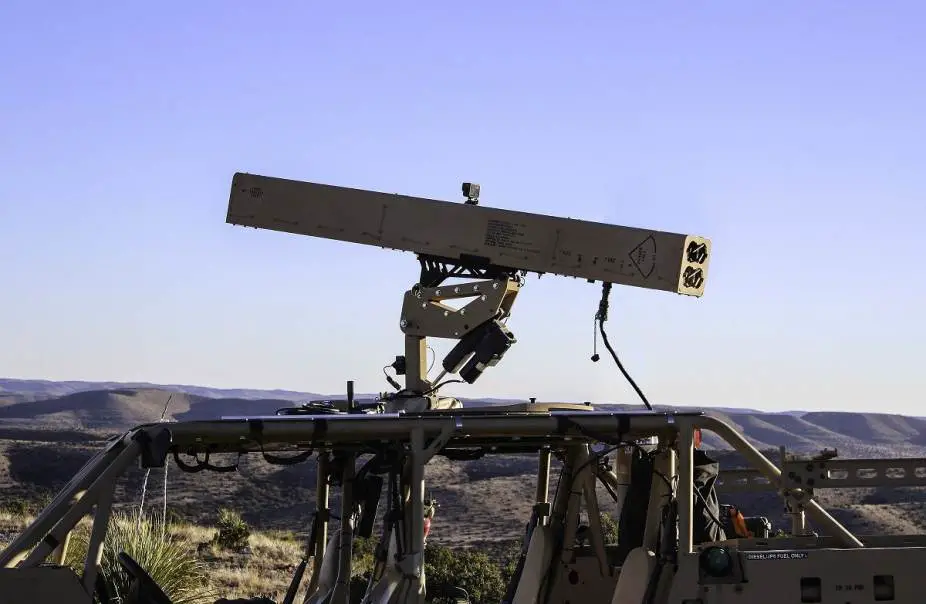Arnold Defense, the world’s largest supplier of 2.75-inch (70mm) airborne rocket launchers, has designed a game-changing capability that promises ground and maritime small unit teams an affordable, highly capable and rapidly deployable fire support solution.
Follow Army Recognition on Google News at this link

LAND-LGR4 “Fletcher” is lightweight, reliable and provides precision fire support previously only available utilizing aviation assets. It can be mounted on a ground vehicle, watercraft or be stand independently. (Picture source: Arnold Defense )
Nearly two decades of global counter-insurgency and counter-terrorism campaigns have seen expeditionary forces heavily reliant upon Close Air Support (CAS) provided by expensive manned and unmanned platforms, most of which require extended periods of time to deliver lethal effects to where they are needed most. However, as the character of conflict pivots towards engagement with higher capability adversaries in more contested environments, many of these legacy fire support platforms are being denied access to areas of operation by complex enemy air defense and electronic warfare systems. As a result, forward-deployed, small unit teams are seeking to reduce their reliance upon legacy CAS assets through the acquisition of organic, precision fire support capabilities which allow them to engage with highly agile and well-protected enemy forces at short notice and in any environmental conditions.
US-based Arnold Defense company has adapted its family of airborne rocket launchers to develop the LAND-LGR4 “Fletcher” Laser Guided Weapon System, a lightweight 2.75-inch rocket launcher that can be integrated onboard any tactical ground vehicle or surface vessel.
First unveiled to the market at DSEi in 2017, Fletcher provides mounted units with a reliable fire support solution at ranges up to 6km, including the engagement of beyond line of sight targets. Fletcher’s small size, weight and power requirements provide mounted units with the ability to rapidly launch any type of 2.75-inch rockets (including BAE Systems’ Advanced Precision Kill Weapon System (APKWS) and Thales Hydra FZ90) against enemy armor and troops in cover.
In June 2020, BAE Systems completed the first successful live-fire launch of APKWS laser-guided rockets from Fletcher in a proof of concept demonstration which highlighted the solution’s ability to deliver stand-off precision strike without reliance upon CAS. Conducted at the US Army’s Yuma Proving Grounds, the demonstration illustrated the low-cost, precision-strike and low collateral damage capabilities of Fletcher and APKWS. This was followed in January 2021 with a live-fire program at Dillon Aero’s range facility near Phoenix, Arizona which saw Thales Hydra FZ90 rockets certified for launch from Fletcher amongst other Arnold solutions.
Measuring 74.5-inches in length and 56lbs in weight (unloaded), the Fletcher launcher is easily attached to ground vehicle weapon mounts. As an example, Arnold Defense has an agreement in place with MSI Defense which pairs Fletcher with the company’s Vehicle Integration Kit (VIK).
To date, Fletcher has been installed onboard a variety of tactical ground vehicles including Polaris’ MRZR and DAGOR; Navistar’s SOTV; Nimr’s Ajban LRSOV; Oshkosh’s S-ATV; Supacat’s LRV400 and HMT600; and Jankel’s LTTV. Fletcher can also be mounted on a tripod in the force protection role, ideal for base security and area denial. Arnold is also integrating Fletcher on board Rigid Hull Inflatable Boats (RHIBs) through to larger surface vessels to support maritime missions.
Fletcher is currently available in Single (4-round) and Double (8-round) configurations, dependent upon the mission requirements of customers. Both configurations are already supporting Special Operations Forces in North America and Europe.
Planning to futureproof its solution, Arnold Defense will integrate Fletcher on board even lighter-weight ground vehicles in the future, including Unmanned Ground Vehicles and Unmanned Aerial Vehicles, providing small unit teams with extended stand-off and range when delivering precision munitions.














